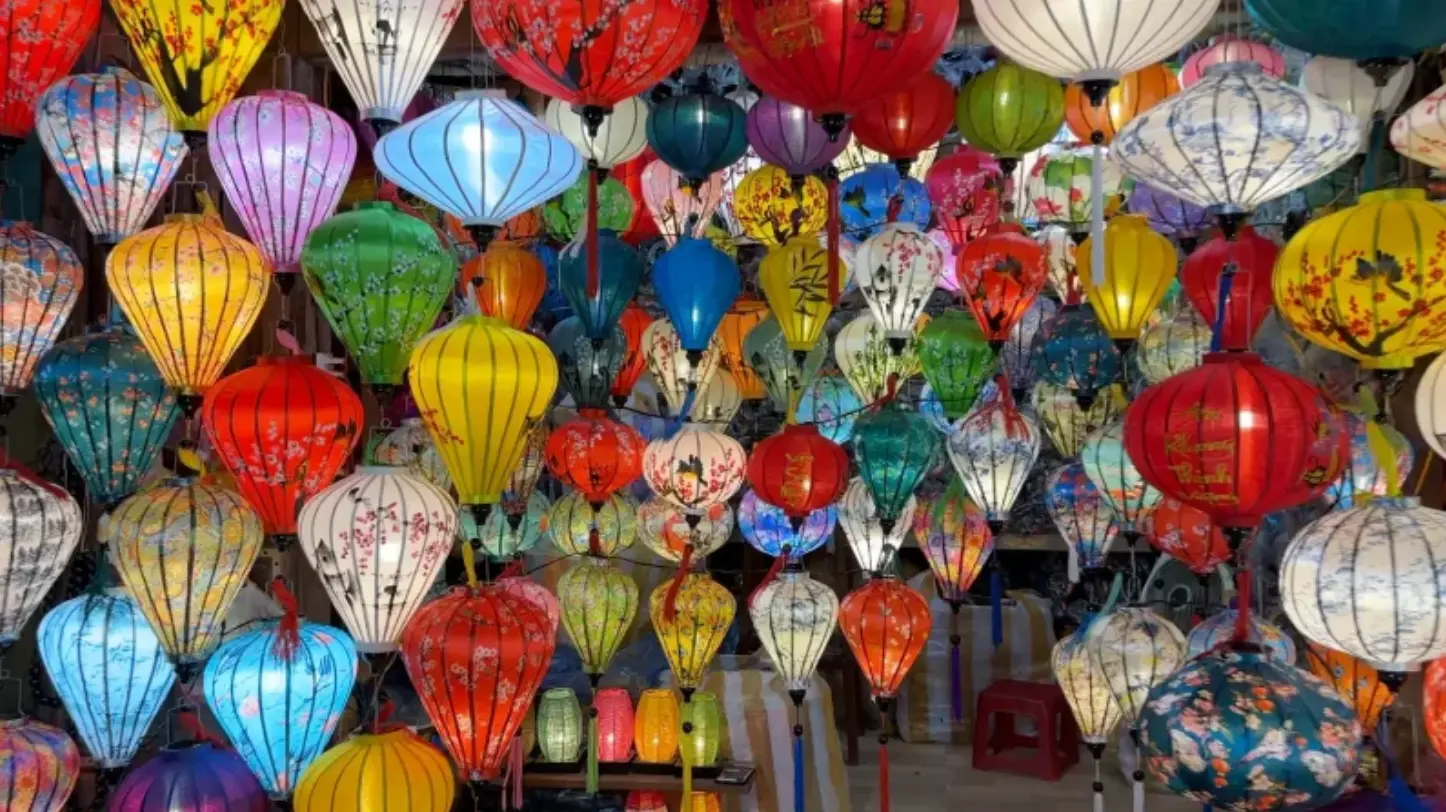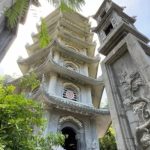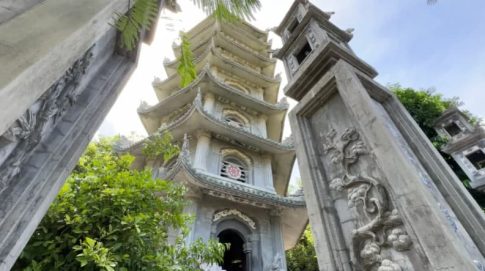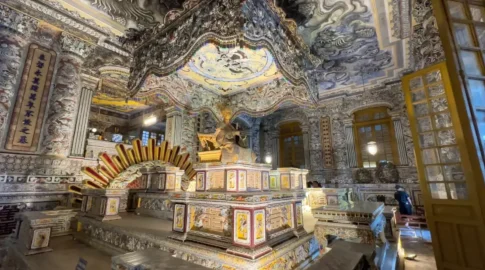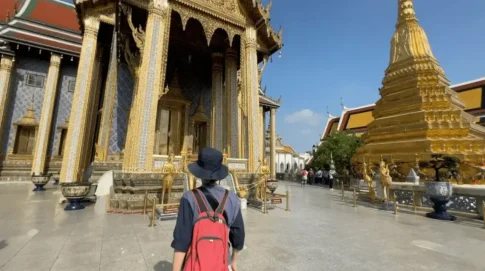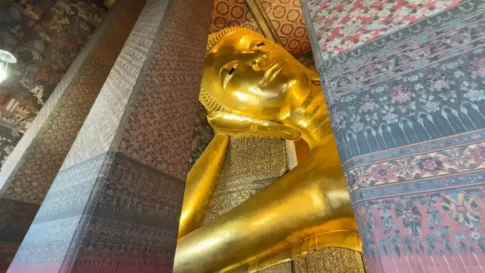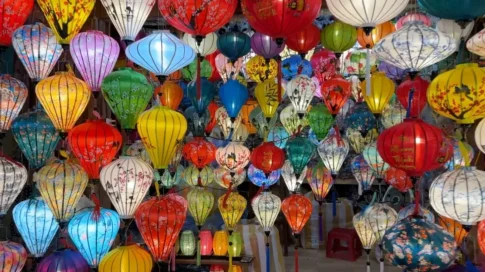- Attractions of the Ancient City of Hoi An
- How to get to Hoi An
- Tourist Attractions in Hoi An
- Sample travel plan in Hoi An
I fully enjoyed sightseeing in Hoi An for 3 days and 2 nights. Hereafter, we will introduce the key points and recommended travel plan for sightseeing in Hoi An based on what we saw during that visit.
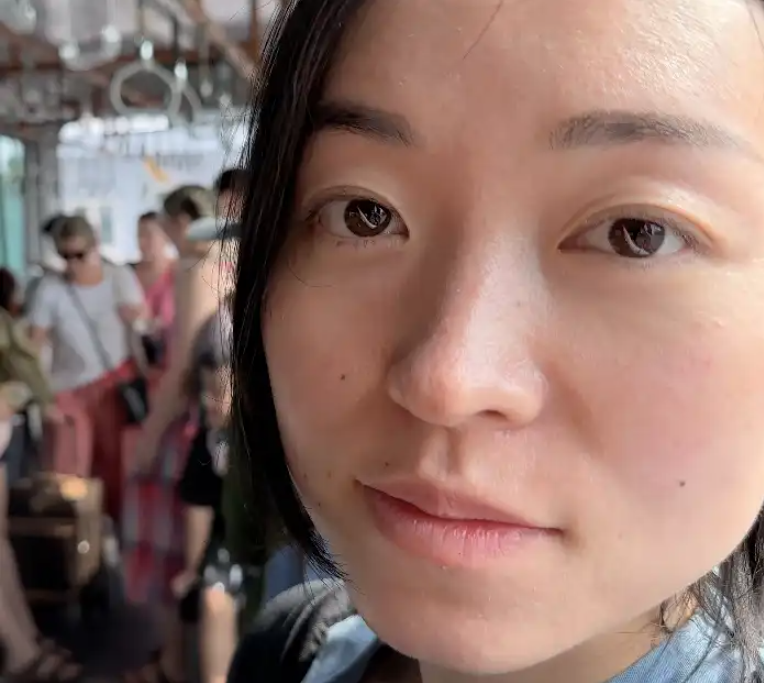
Bottom line, you should set aside two days and one night to visit Hoi An! With that much time…
Selected 5 paid spots in the Old Quarter
Recommended cafes
Anh Hoi Island at night with beautiful night view
You can enjoy all of these to the fullest. If you are planning to visit Vietnam, please read to the end.
Attractions of Hoi An
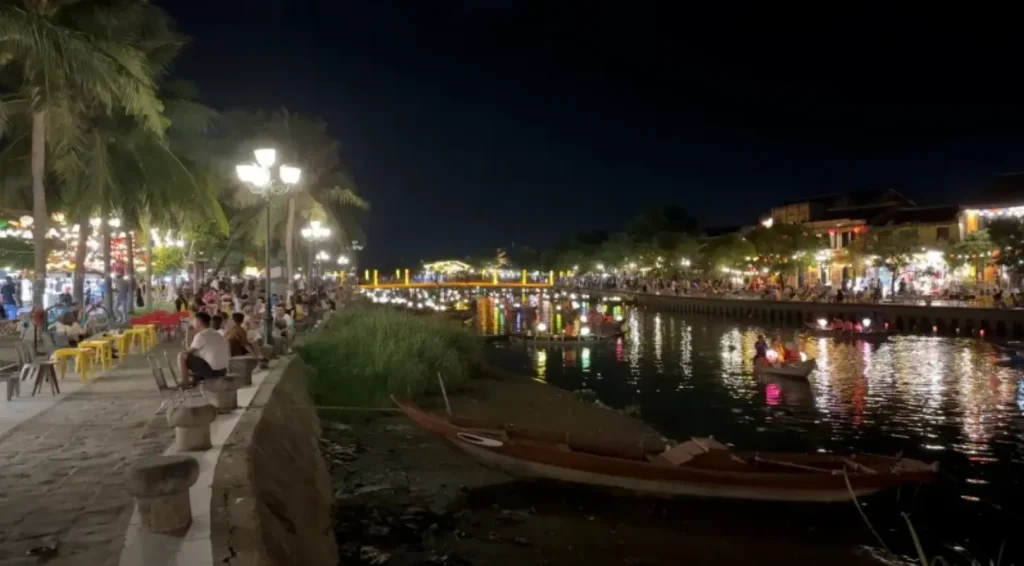
Hoi An used to be a bustling port town that served as a hub for maritime trade. It has developed as a key point on the Silk Road by sea since the days when peddling on the Silk Road was prosperous.
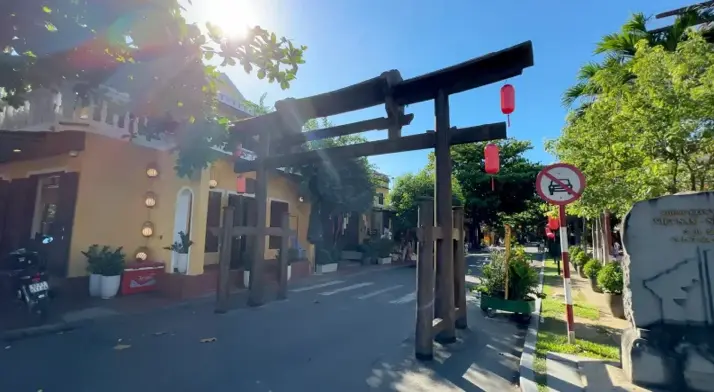
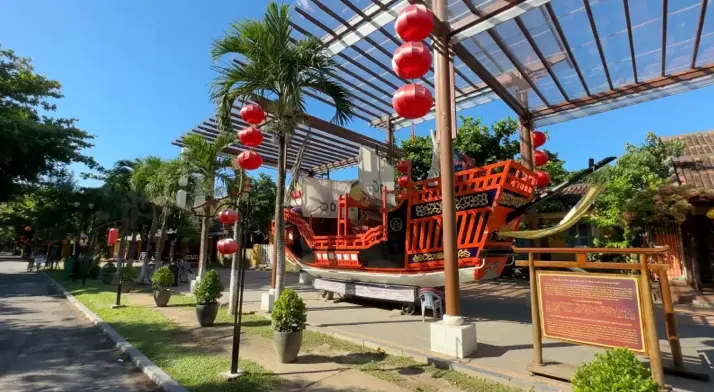
In the Edo period (1603-1867), Japanese merchant ships came and went frequently, and trade was so active that a Japanese town was formed. In addition to Japan, China, Portugal, and the Netherlands also used the area as a base for maritime trade, giving the streets a sense of the cultures of various countries.
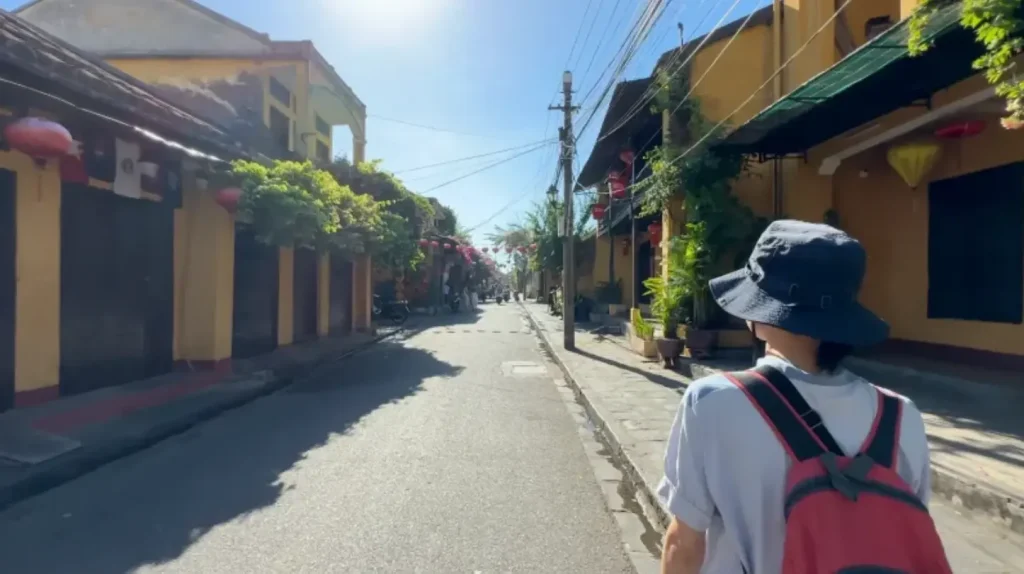
During the Vietnam War, the economic center of the surrounding area was moved to Da Nang, and the city suffered relatively little damage from the war. This is one of the reasons why Da Nang has become a popular tourist destination as an ancient city where the streets of a port city from nearly 200 to 300 years ago still remain (World Heritage registration = 1999, registered as a World Cultural Heritage site).
How to get to Hoi An

Hoi An is located about 30 km south of Da Nang, a large city in central Vietnam.
There is no railroad between Da Nang and Hoi An. Also, there used to be a public bus service, but I could not find it as of June 2023.
A car-dispatch app called Grab is widespread in Vietnam. I used Grab to get from Da Nang to Hoi An for 380,000 VND (about 14.8 USD).
Hoi An Attractions
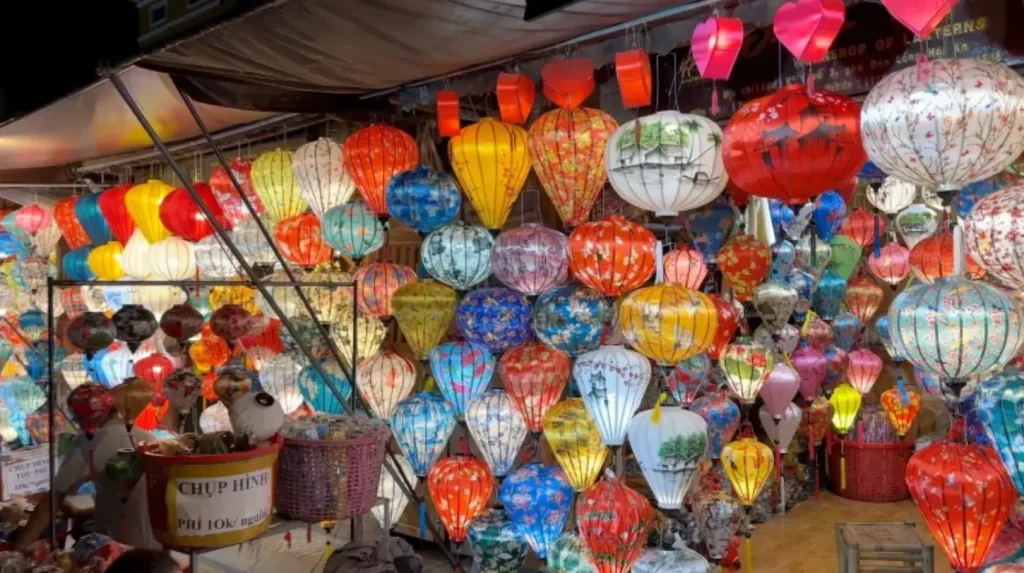
From here, I would like to introduce some of the sights in Hoi An that I actually visited. I would be happy if you could use this as a reference for your “go” or “no go” when you visit Hoi An.
Japanese Covered Bridge
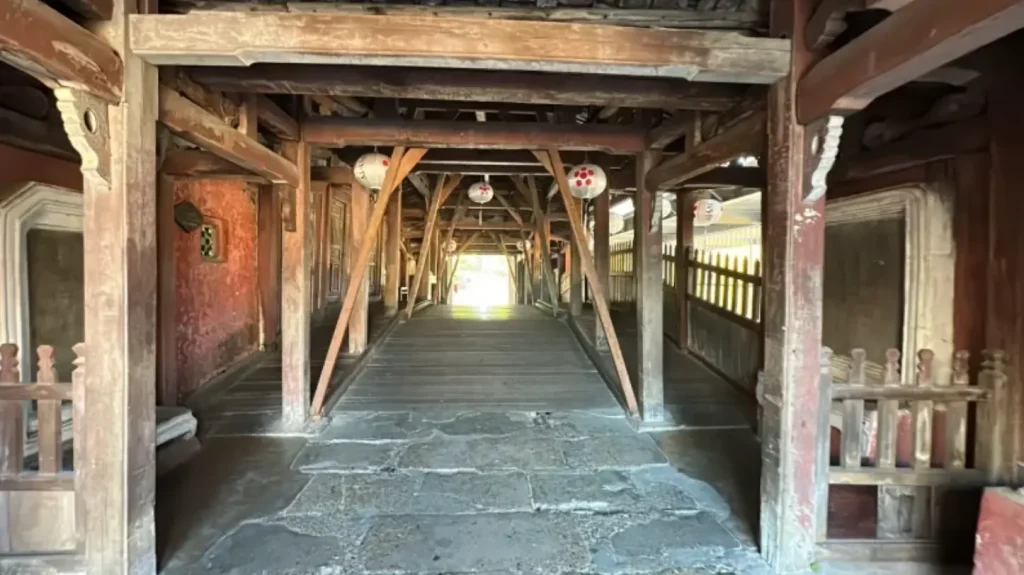
It is also known as “Cau pagoda”. The bridge was designed by a Japanese during the process of forming a Japanese town, and thus became known as the “Japanese Covered Bridge.
The location is here. It is located in a key location in the old town of Hoi An, with the old Japanese town to the west and the old Chinese town to the east.
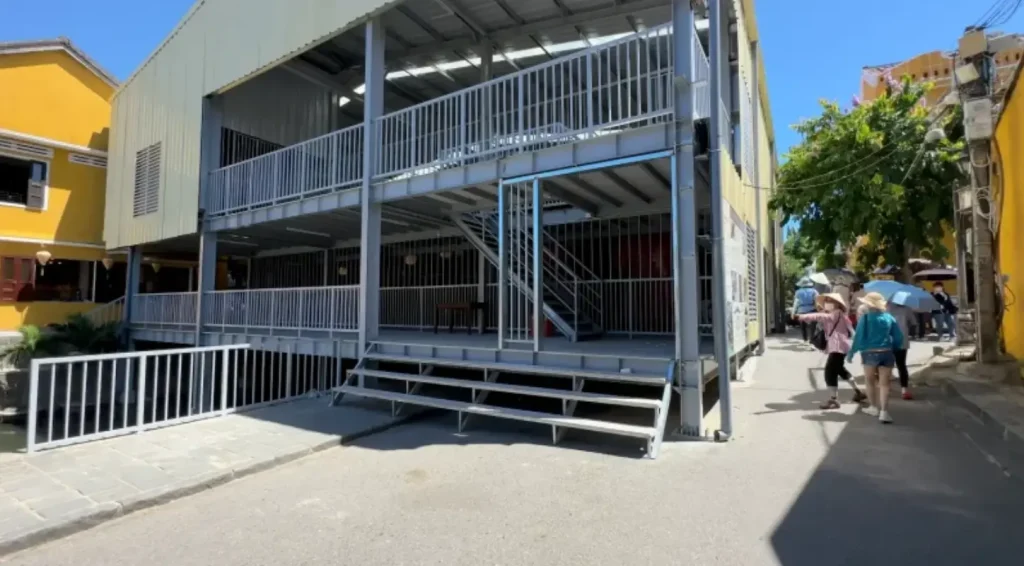
It is a place that truly represents Hoi An, but when I visited in June 2023, it was under renovation and its exterior was covered with prefabs.
This is unfortunate, no matter how hard I try to make it look…
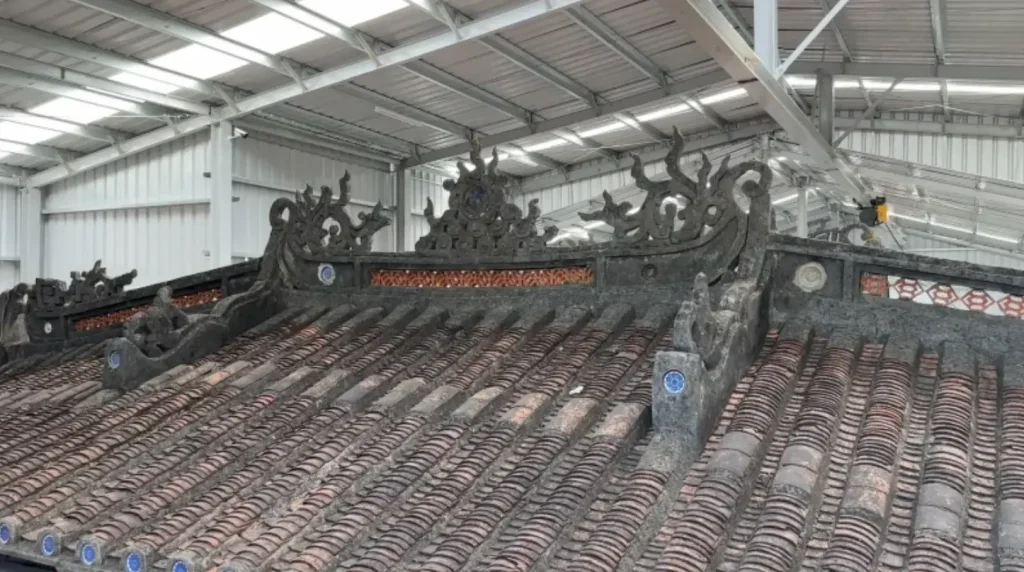
However, because the bridge was undergoing renovation, we were able to see the roof and sides of the bridge that are not normally seen at such close quarters. At the time of publication of this article, the schedule for the completion of the construction was unknown.
World Heritage Hoi An Old Town
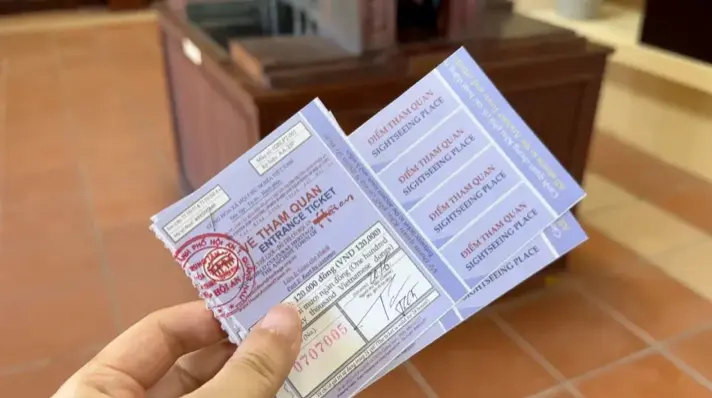
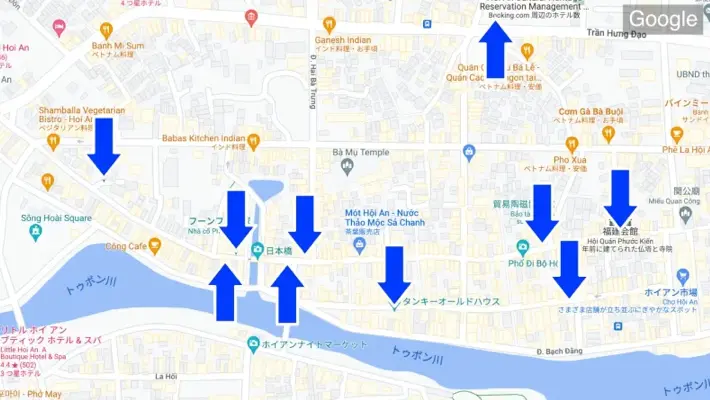
Hoi An Old Quarter, a World Heritage area. Here, one ticket costs 120,000 VND (about 4.62 USD) and allows you to enter five toll areas. I entered 10 toll areas, and I will introduce each of them in detail with photos.
Hoi An Historical Museum
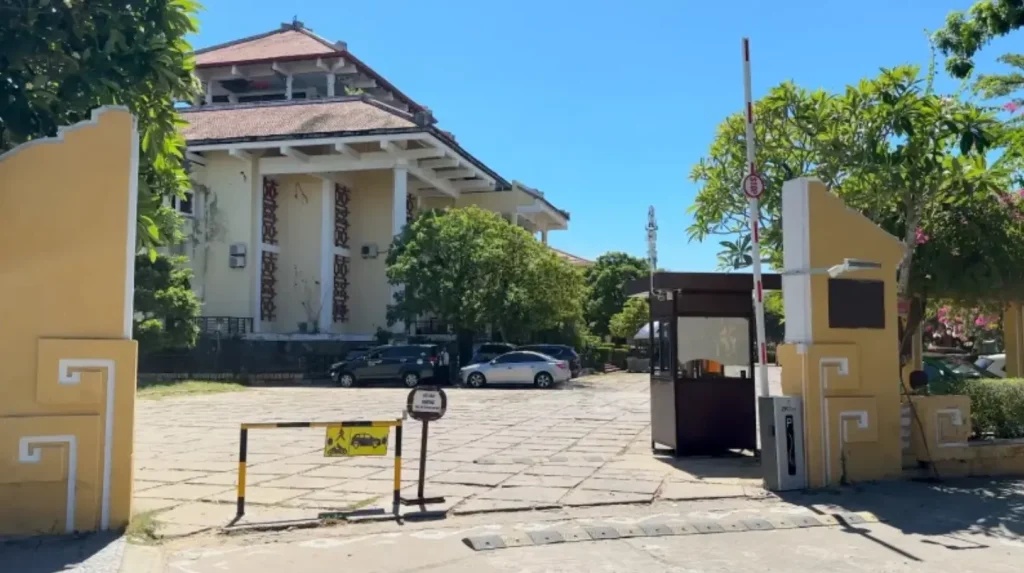
The purpose of my visit here was because I found information on the Internet that it is “the highest point in Hoi An from which you can view the Old City.
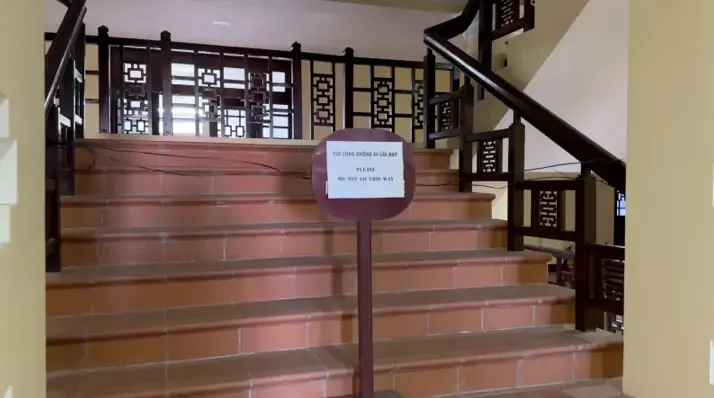
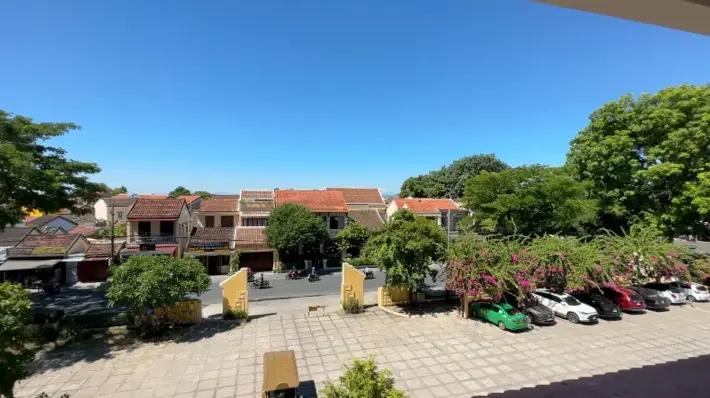
However, when I actually visited, I could not go beyond the second floor. So, to be honest, the view from the top is not so good.
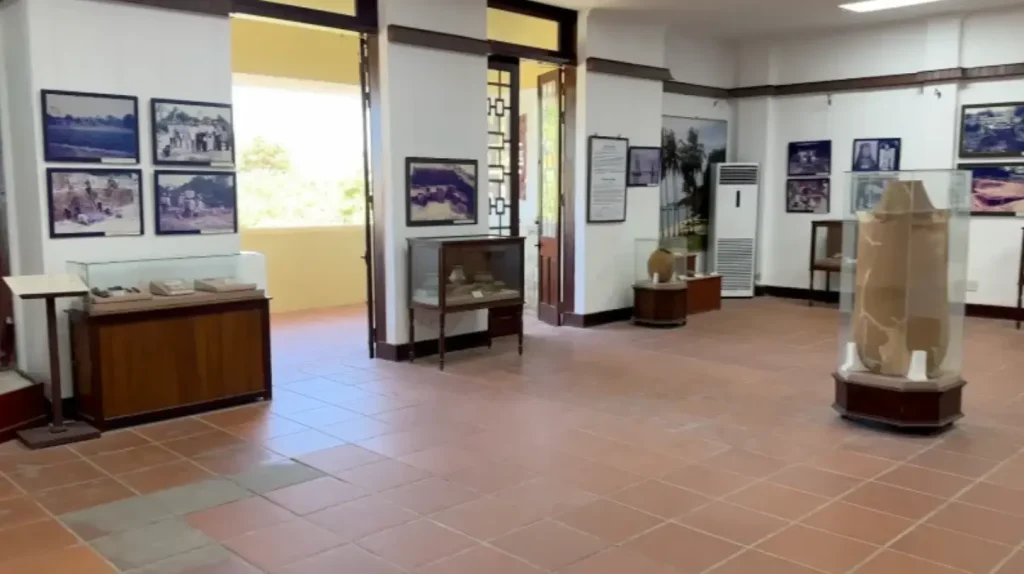
Inside the building were exhibits of materials from the Vietnam War and the era of prosperity in maritime trade.
The location of the Hoi An Historical Museum is shown above. If you are interested in the history of Hoi An, you may find it fascinating, but if you are not interested in the history of Hoi An, you do not need to visit it for the scenery.
Japanese Culture Gallery
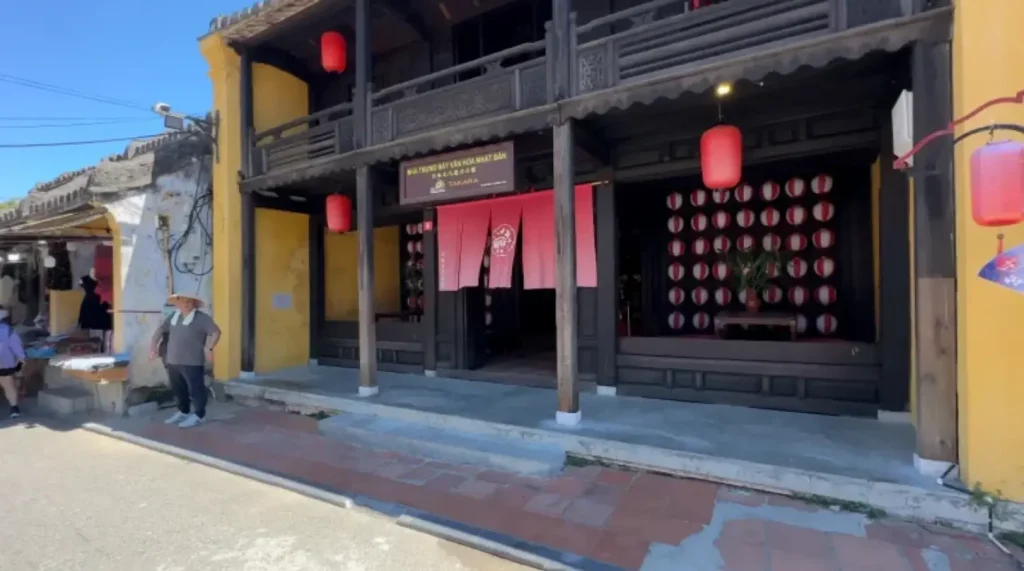
As mentioned at the beginning of this article, Hoi An has long had a connection with Japan due to trade during the Edo period (the red seal trade). This is the reason why they introduce Japanese culture here.
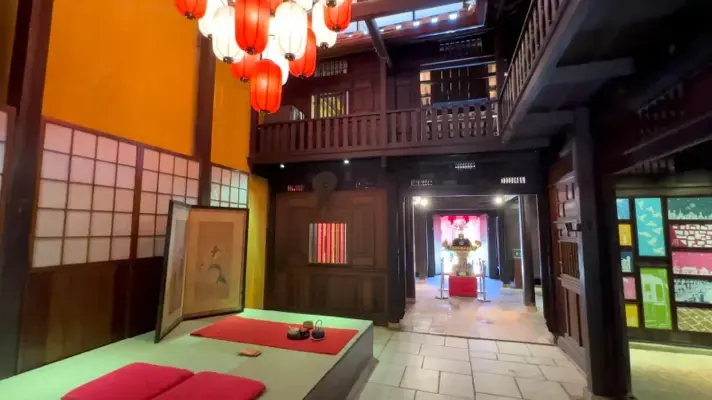
Japanese Culture Gallery Location
The Japanese Culture Gallery is located near the Japanese Covered Bridge.
If you have extra tickets, you can just drop by.
The Old House of Phun Hung
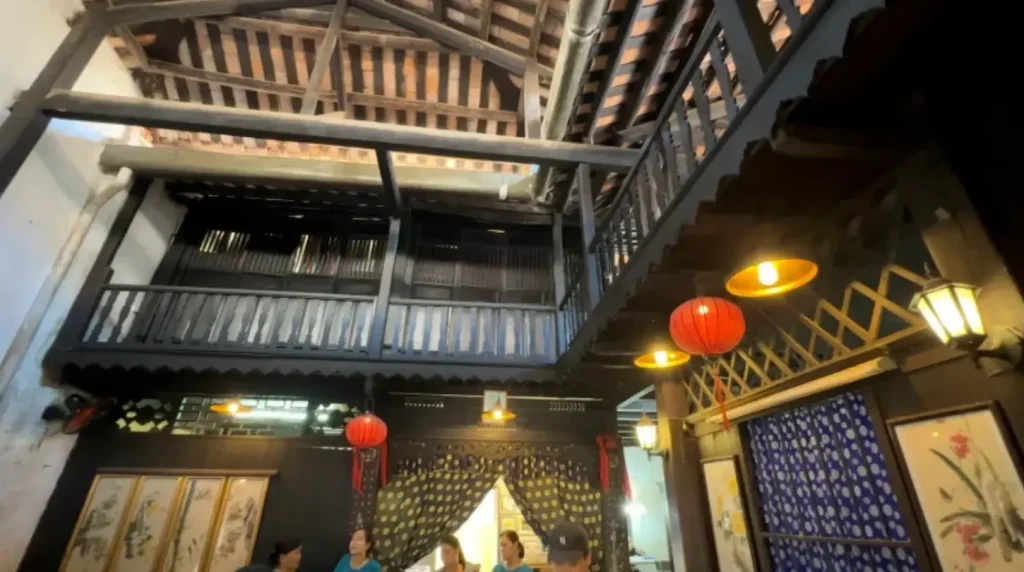
It is a representative building of the old Japanese quarter built 200 years ago. It is also an active house that is still used as a residence.
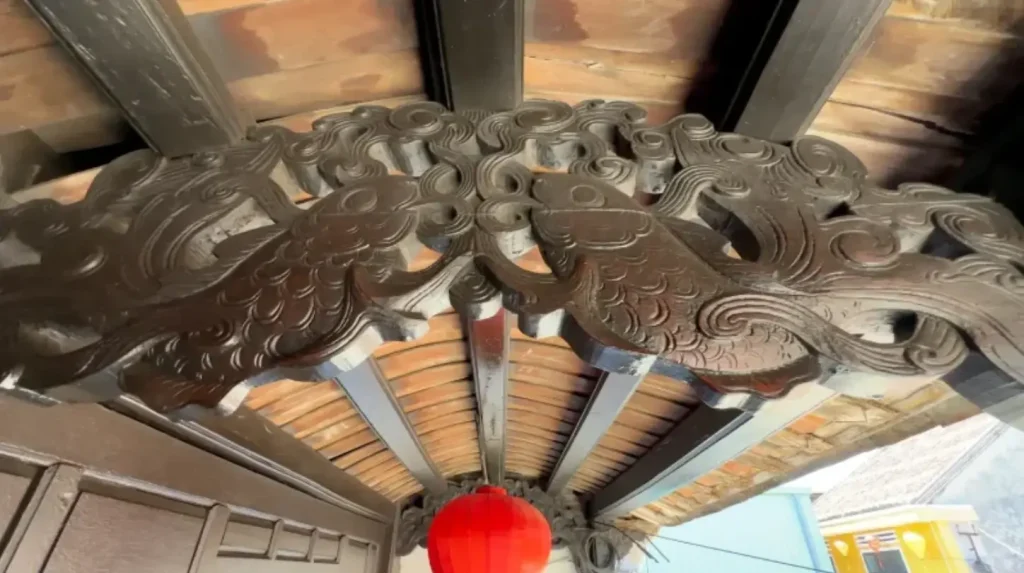
The outdoor decorations give a Japanese feel.
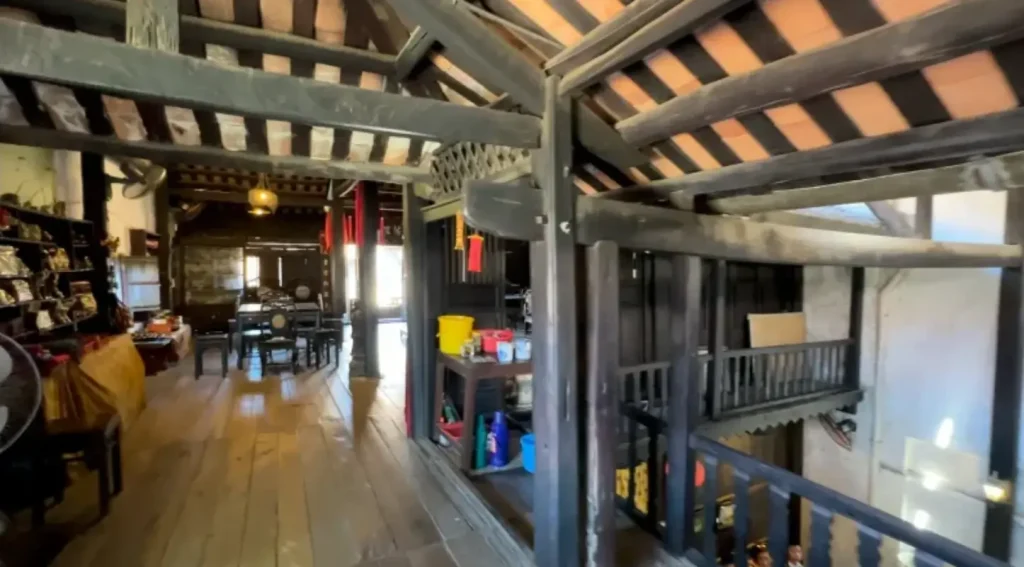
Part of the facility is a souvenir shop, but don’t worry, there is no particularly intense business.
It is located right next to the Japanese Culture Gallery.
It is a rare facility in the old Japanese quarter that is still in use as a working house and is open for tours. We recommend that you enter the building.
Dinh Cam Pho (Cam Pho Communal House)
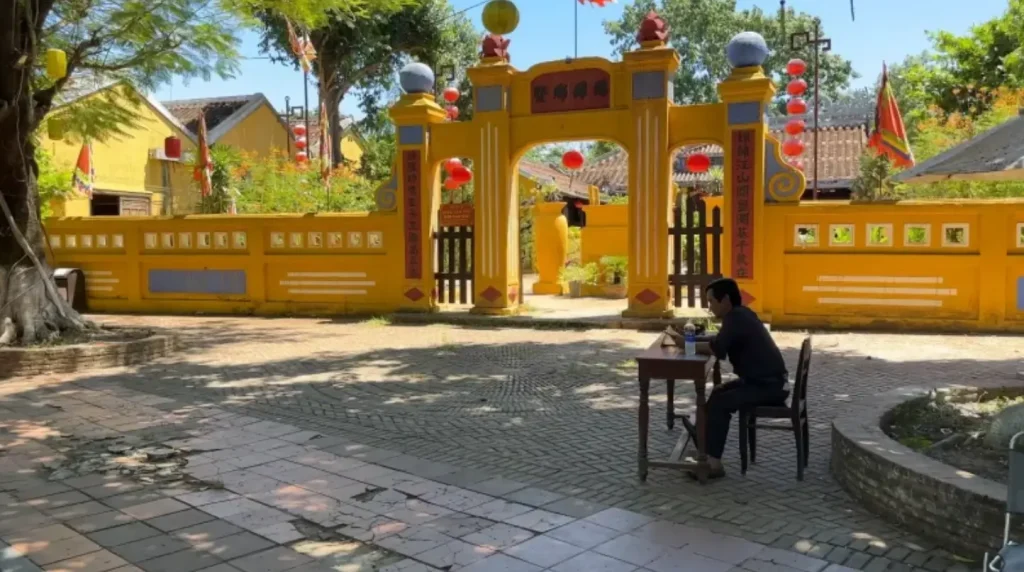
It seems to be a place where you can visit a traditional communal house and a temple as a set.
The location will be above.
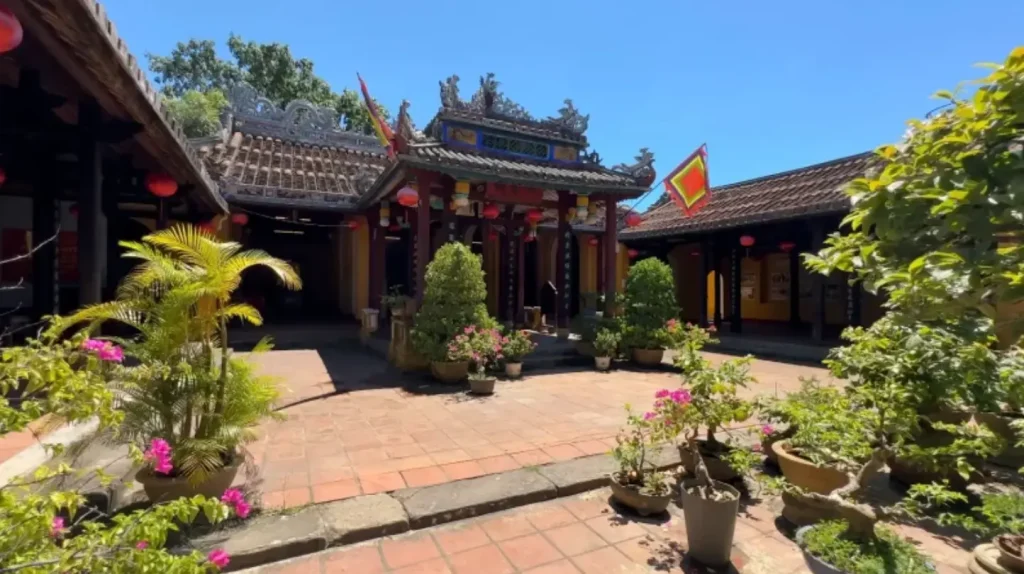
It is not a place where there is anything particularly attractive.
Unless you have a good reason, you don’t need to stop here.
Cantonese Assembly Hall
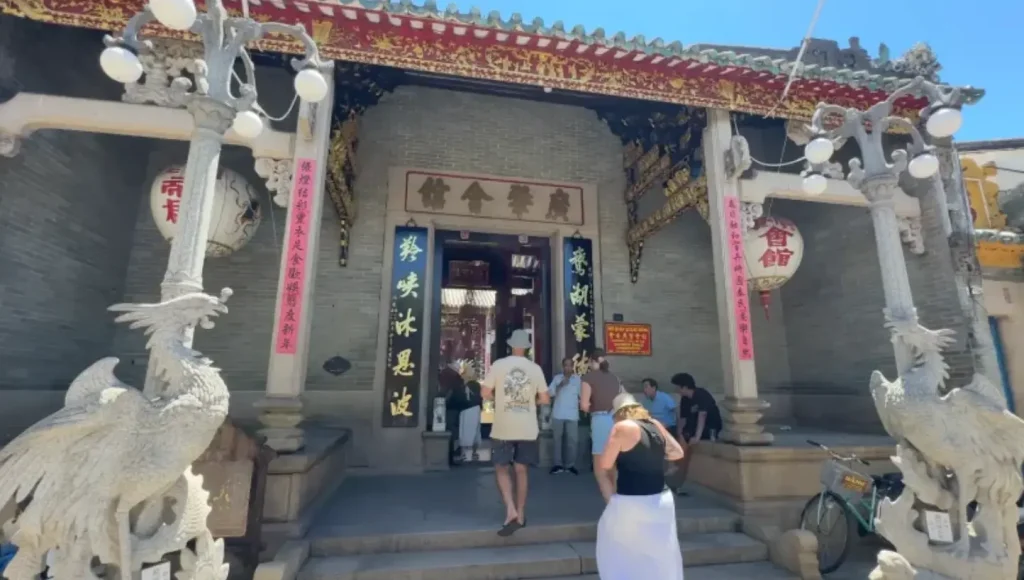
The building is located in the Chinese district on the opposite side of the street from the Japanese district.
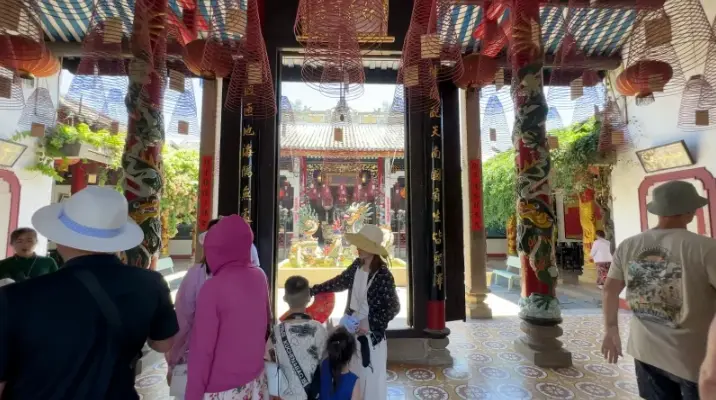
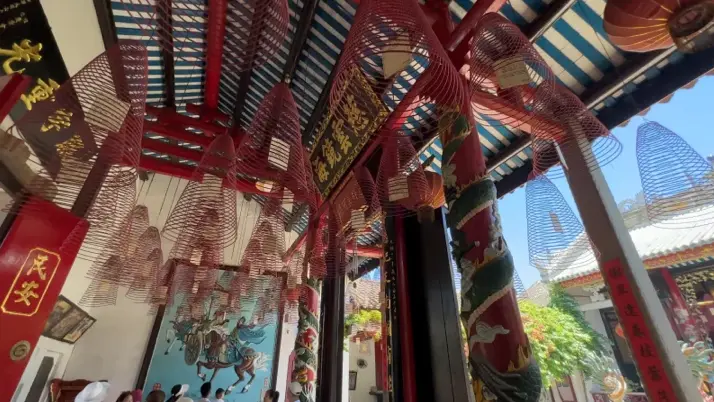
The building itself is beautiful, but more than anything, I was amazed by the huge incense sticks that swirled around the building!
And since they are hung in large numbers, they are very powerful.
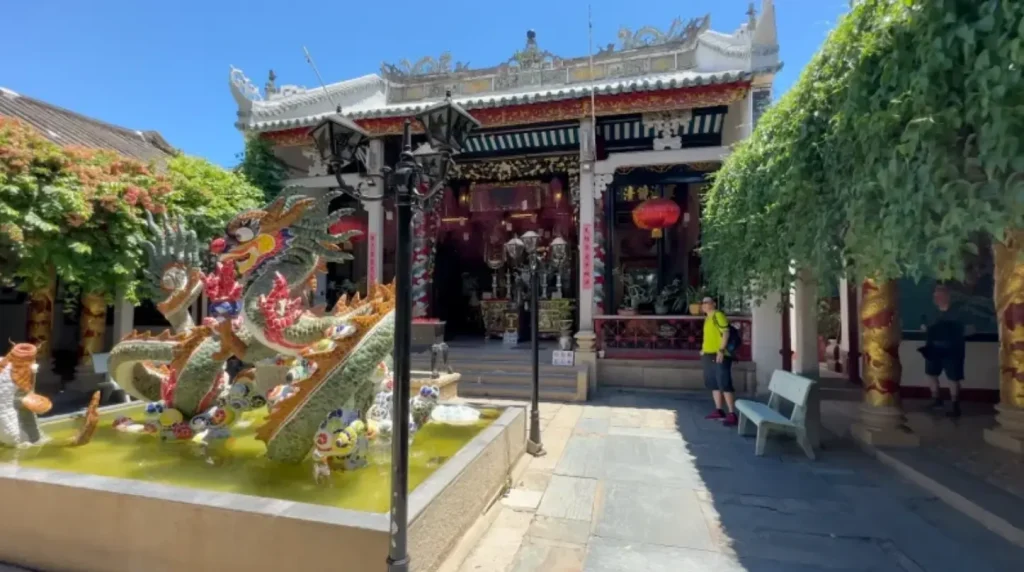
Going further back, there is a beautiful building, but photography was not allowed inside.
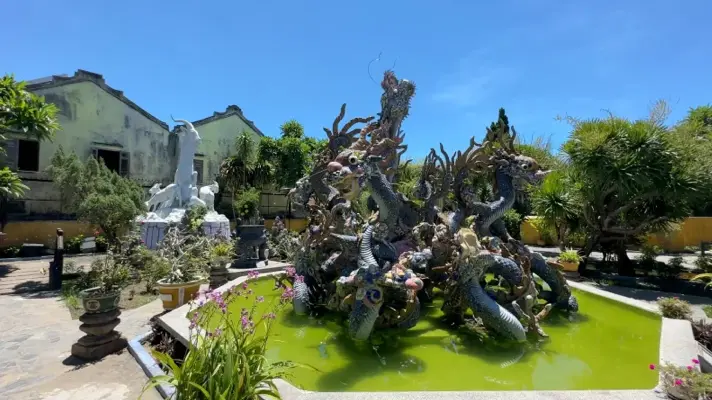
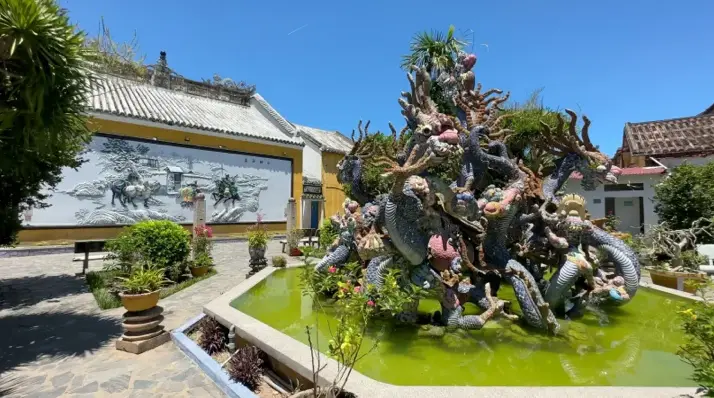
There was a large garden hidden behind Cantonese Assembly Hall.
The dragon Objects are cool. I think this is the right place to visit in the toll area!
Museum of Folklore
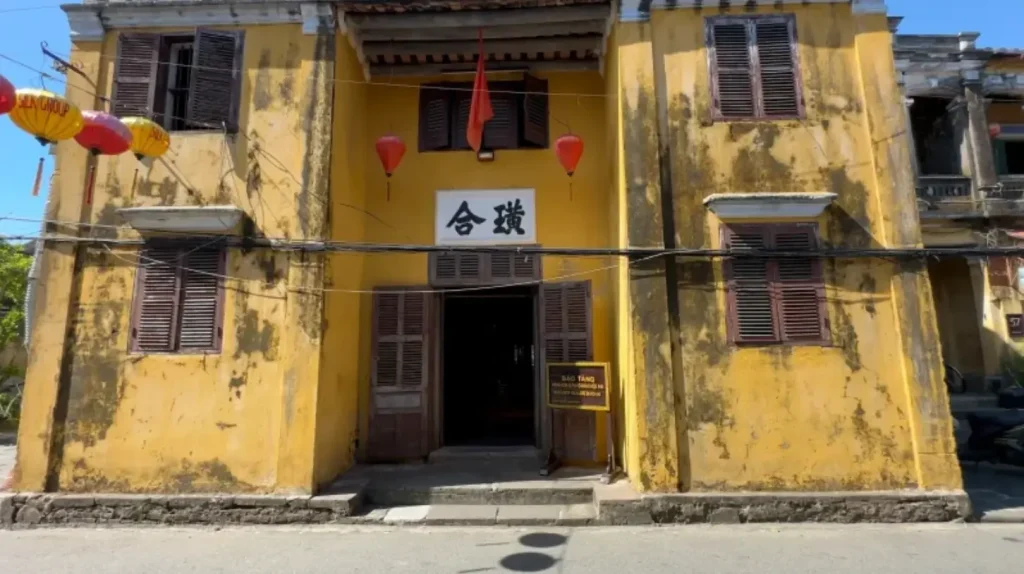
The location will be above.
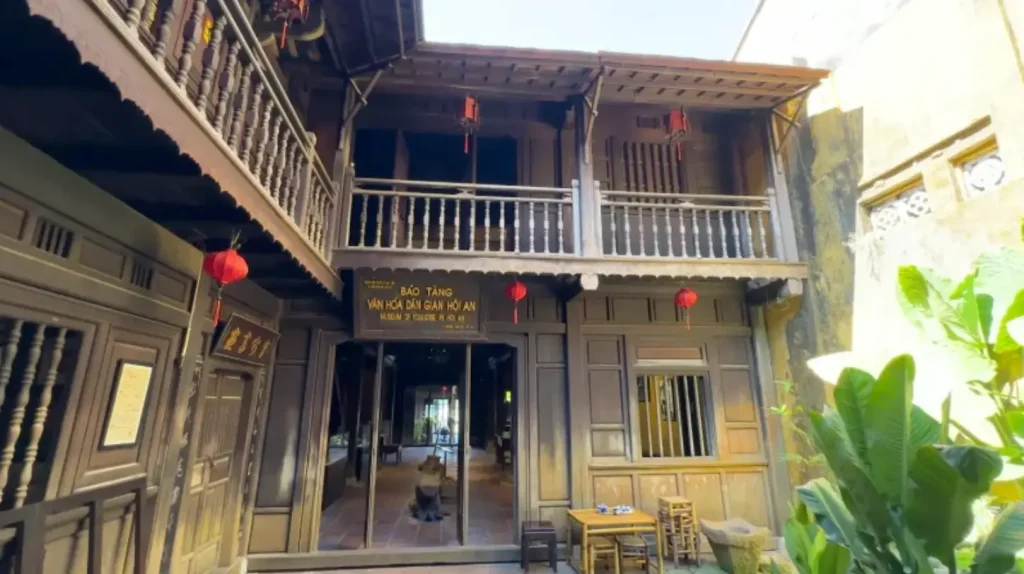
The exhibits provide an insight into the lifestyle of the time.
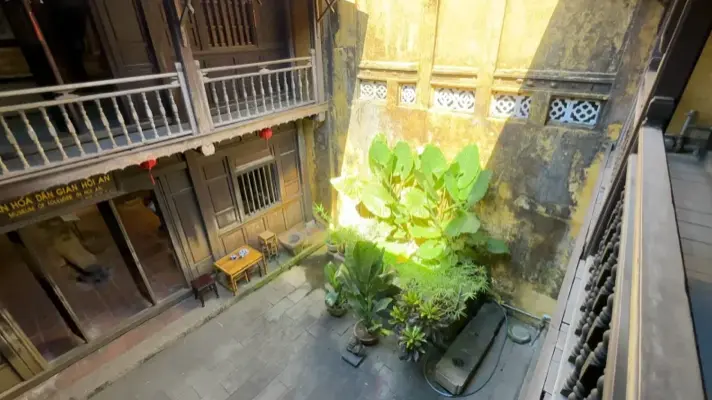
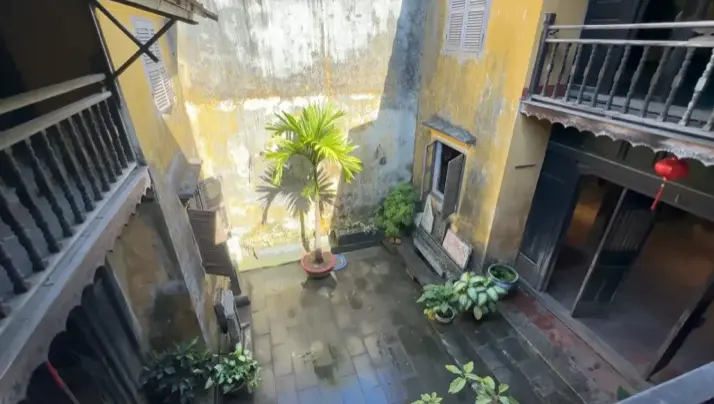
That being said, the charm of the Ethnographic Museum is that it has two beautiful courtyards.
You can also view the garden from the second floor like this, which is also beautiful!
Personally, this is also one of the best places to visit in the Hoi An paid area.
Fukian Assembly Hall (Phuc Kien)
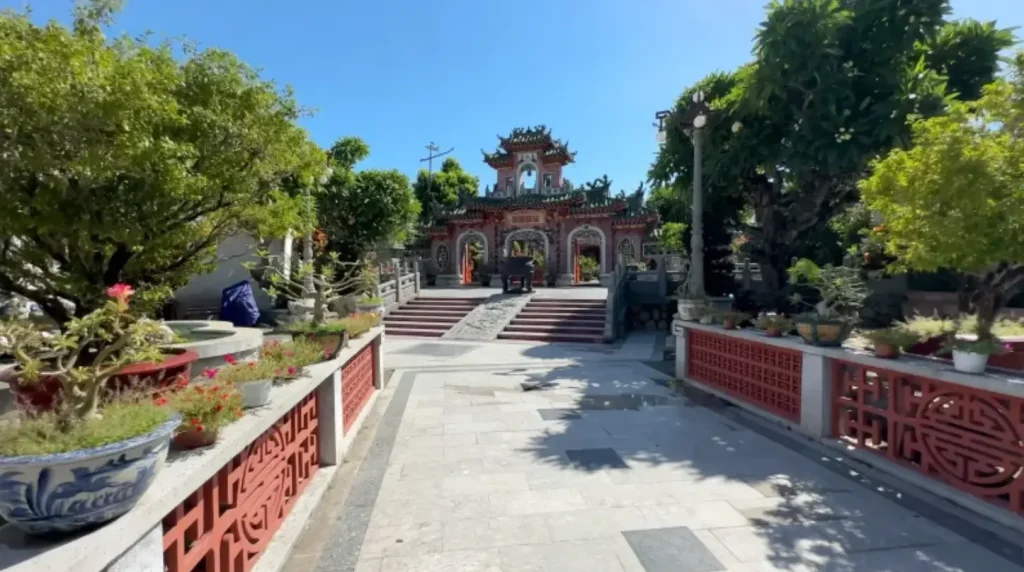
The location will be above.
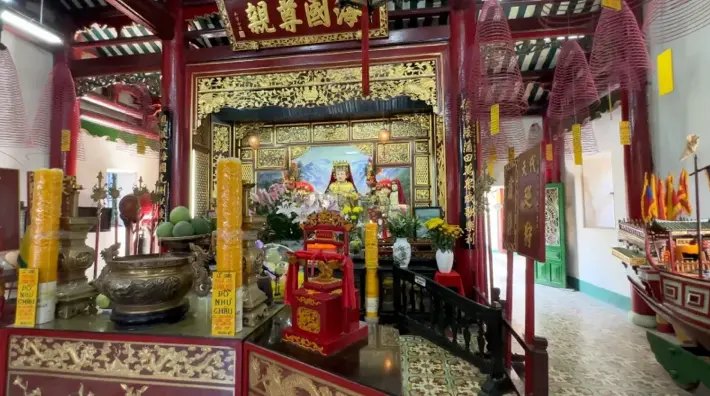
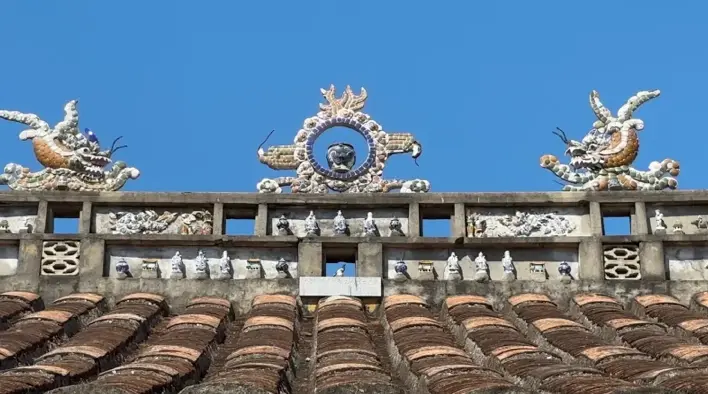
It is said to be a Chinese prayer hall built in the 17th century. It is said to have been a place of prayer especially for nautical matters, and many of the decorations seemed to have nautical motifs.
We recommend that you also visit the Fukian Assembly Hall because of the size of the site and the beauty of the decorations.
Museum of Trade Ceramics
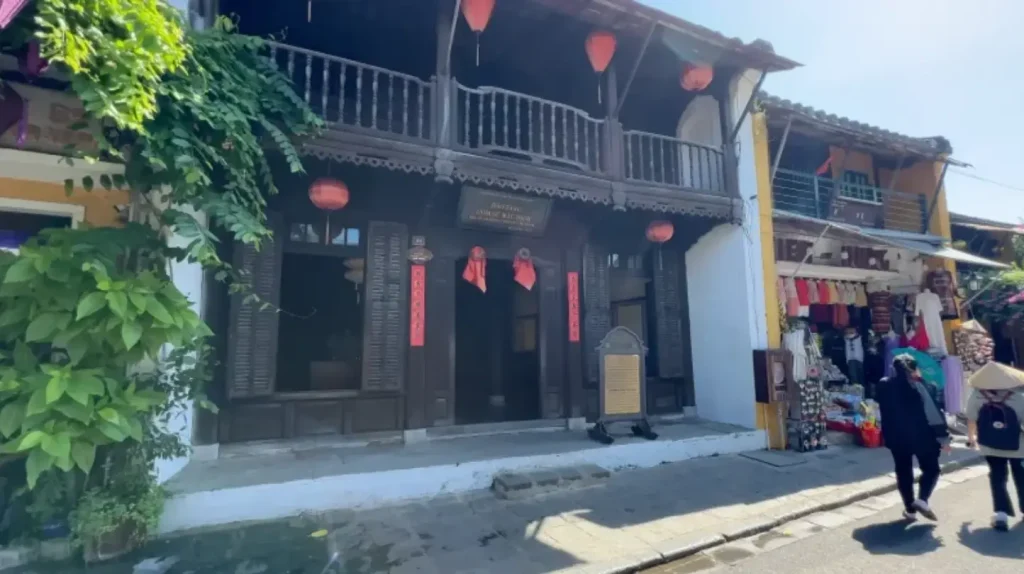
The Museum of Trade Ceramics is also known as the “Silk Road Museum of the Sea. As mentioned at the beginning of this article, Hoi An developed as a port city, and this museum exhibits items related to the ceramics trade.
The location is a short walk from the Fukian Assembly Hall (Phuc Kien) in the direction of the Japanese Covered Bridge.

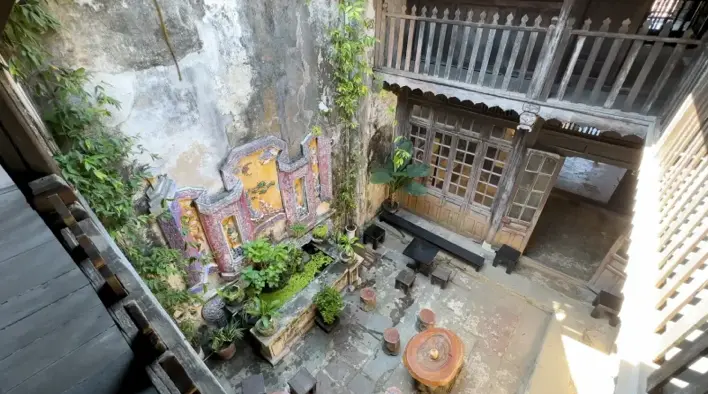
I personally felt the garden was nicer than the exhibits.
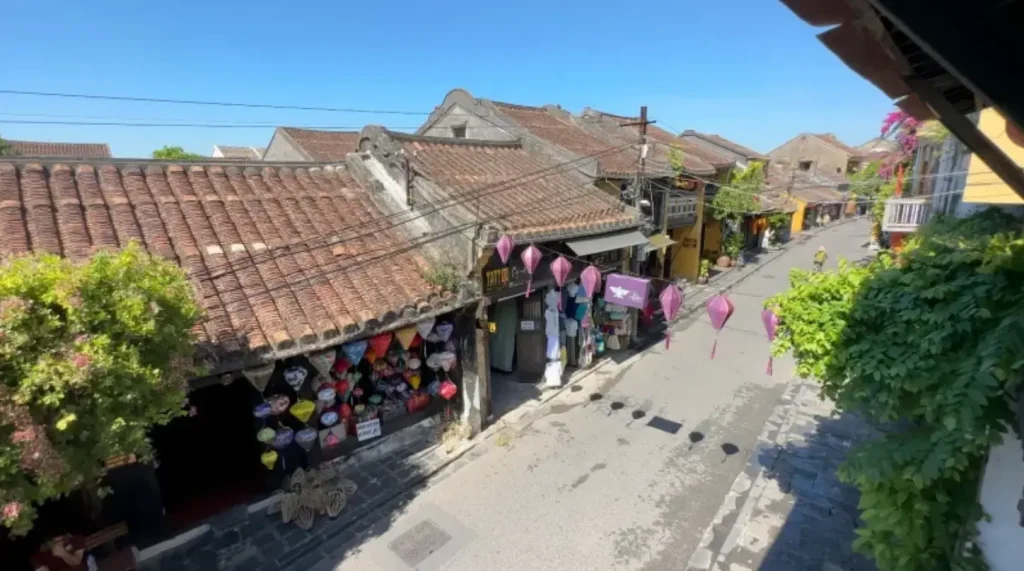
The second floor here also offers a view of the old city. This is why I personally recommend this place.
Old House of Tan Ky
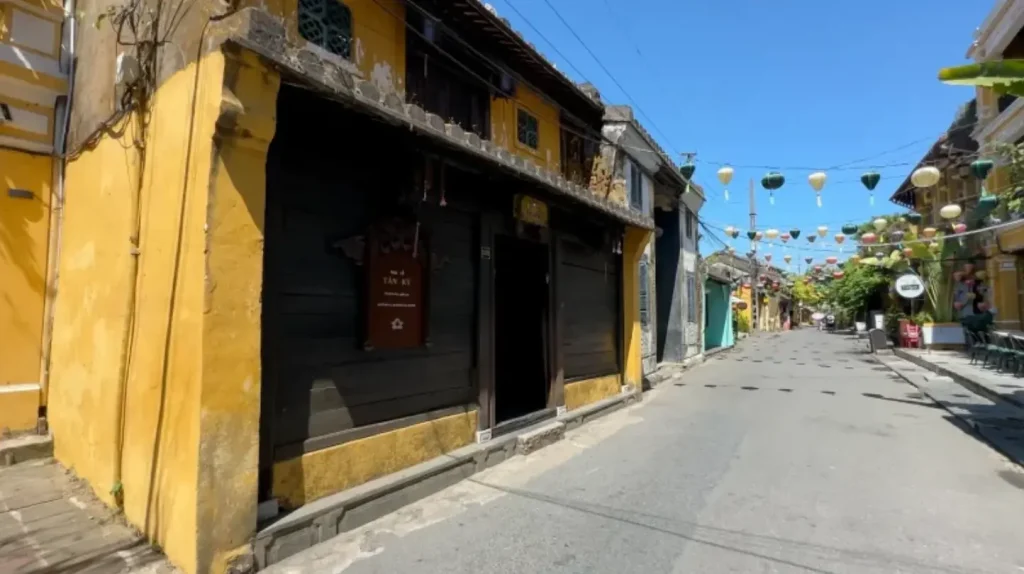
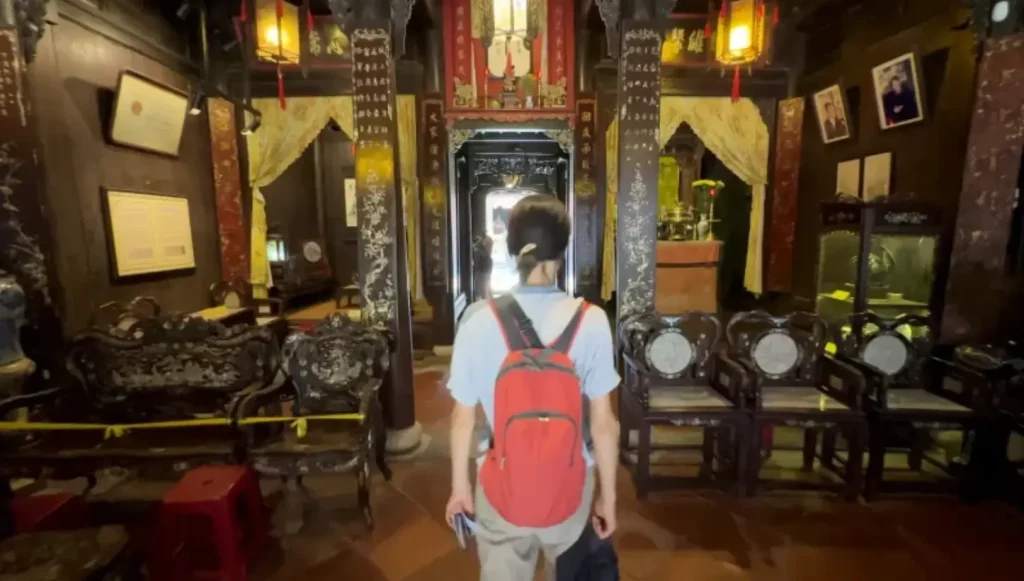
This is an 18th century trader’s house. It is characterized by its well-preserved and original furnishings.
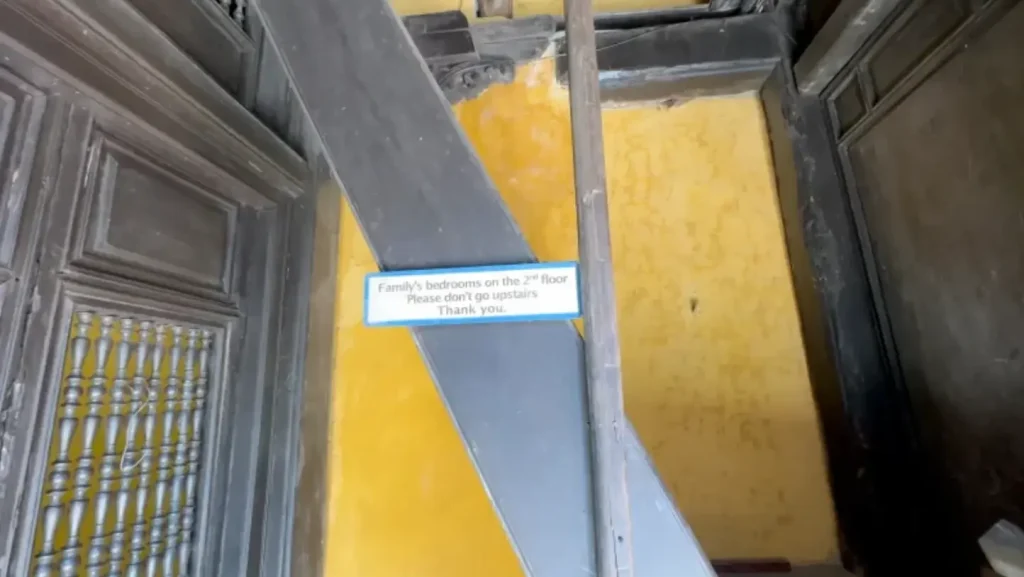
The second floor seems to be a living space and is off-limits to visitors. Although this may seem unfortunate, it is a pity that a 200-year-old building is still being used as a place for daily life, and that visitors can tour its interior. I think that is truly a blessing.
Please note that this is not the same street as the Fukian Assembly Hall (Phuc Kien), the Museum of Trade Ceramics, and the Japanese Covered Bridge.
The Sa Huynh Culture Museum
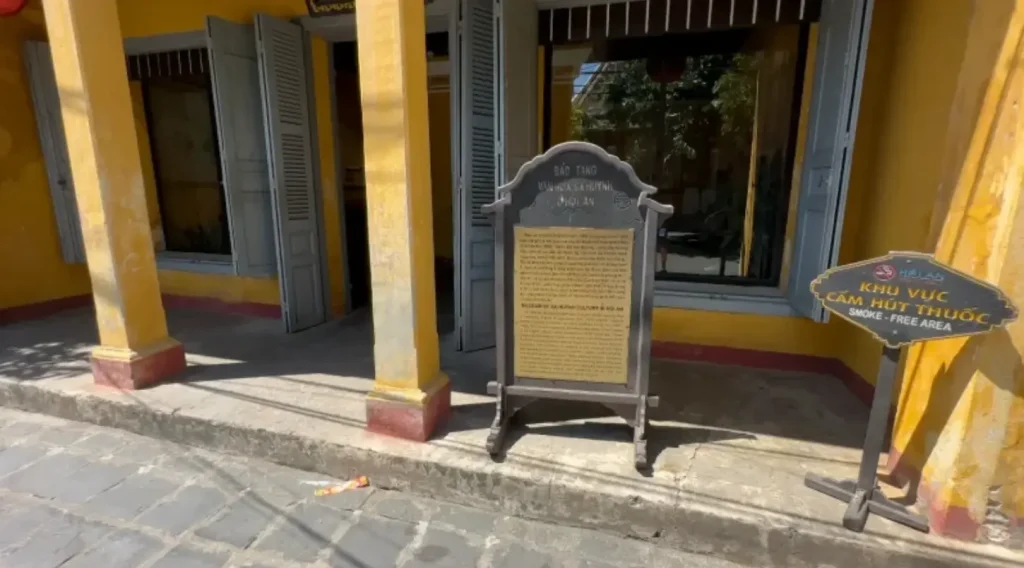
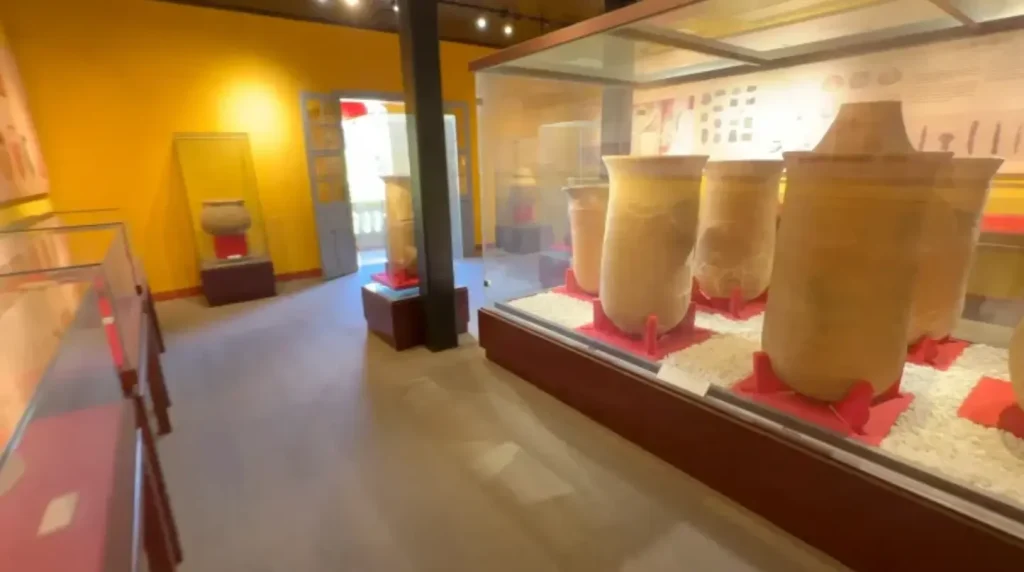
The last museum we visited was The Sa Huynh Culture Museum. The museum exhibits ancient earthenware and other artifacts excavated in and around Hoi An.
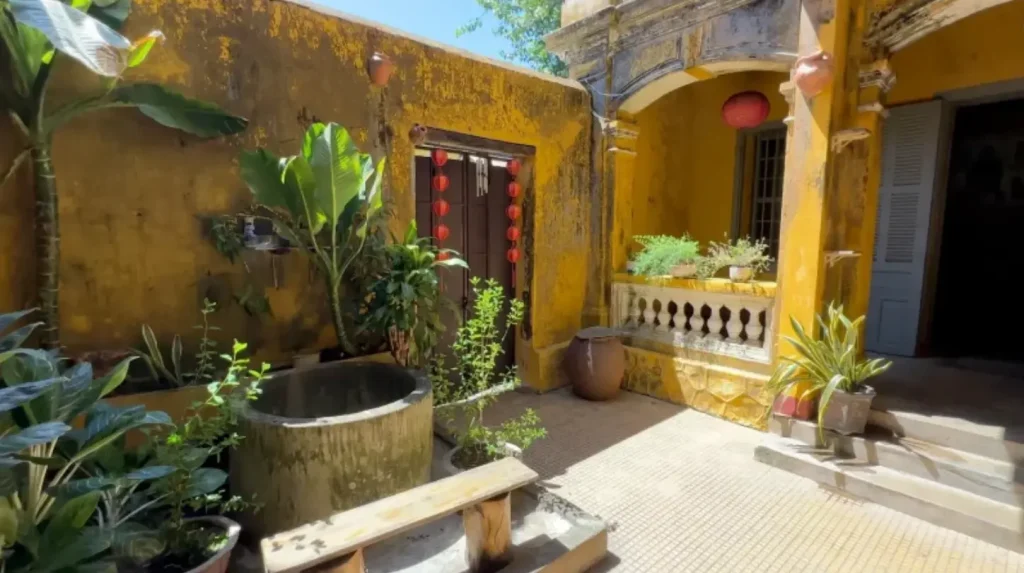
I found it nice to see a well that may have once been used.
However, I was not familiar with the “Sa Huynh culture,” which may have once flourished in the Hoi An area, and I personally did not enjoy it.
It is located in a prime location near the Japanese Covered Bridge.
5 recommended locations in the World Heritage Area
As you have seen, I have seen 10 paid areas, but if I had to choose only 5 of them to visit with the purchase of one ticket, I would choose the following locations.
As I mentioned in the introduction section of each, the five places listed here have their own attractions.
- The Old House of Phun Hung…200 year old house representing the Japanese town
- Cantonese Assembly Hall…Unique shaped incense sticks and backyard
- Museum of Trade Ceramics…beautiful garden and view from the second floor
- Museum of Folklore…two beautiful gardens
- Fukian Assembly Hall…spacious and decorated in the motif of the sea

We hope you will find the information so far useful when you visit the Old Town area of Hoi An, which is registered as a World Heritage Site!
An Hoi Island
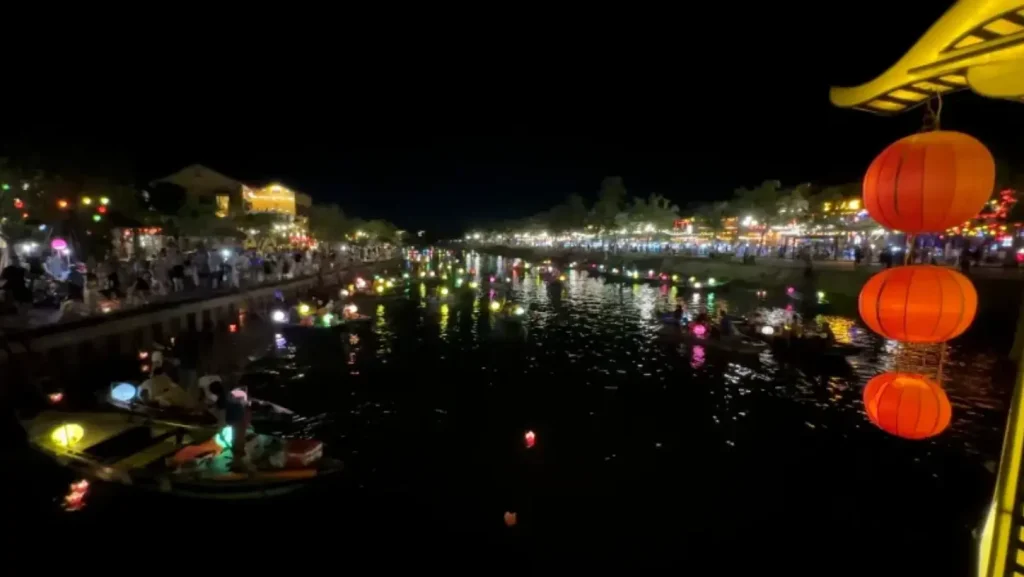
Along with the Old Quarter, which is registered as a World Heritage site, An Hoi Island is the highlight of Hoi An sightseeing. The lights up the island at night attract visitors. Personally, I feel that to come to Hoi An and not visit Koh Anh Hoi at night is to throw away 70% of your Hoi An sightseeing experience.
It is a must-do activity! Hereafter, I will introduce you to Koh An Hoi.
Lantern floating
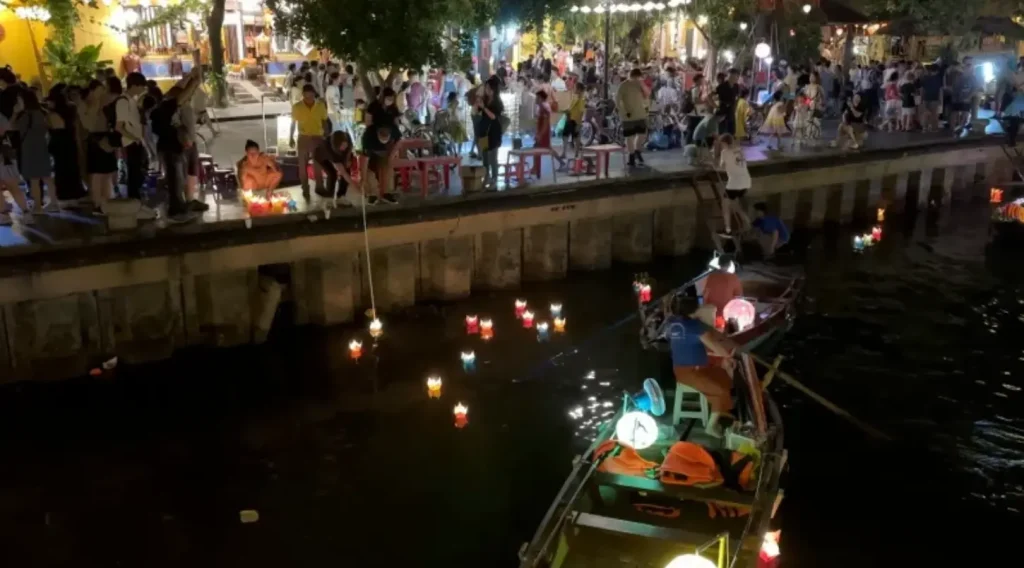
This is a scene from a lantern floating ceremony.
In Hoi An, there is a long-standing custom of using lanterns to ward off evil spirits, and floating lanterns is a part of this custom. I didn’t float lanterns, but from the look of the lady working, it seems that you can float lanterns for 100,000 dong (about 3.85 USD).
Restaurant
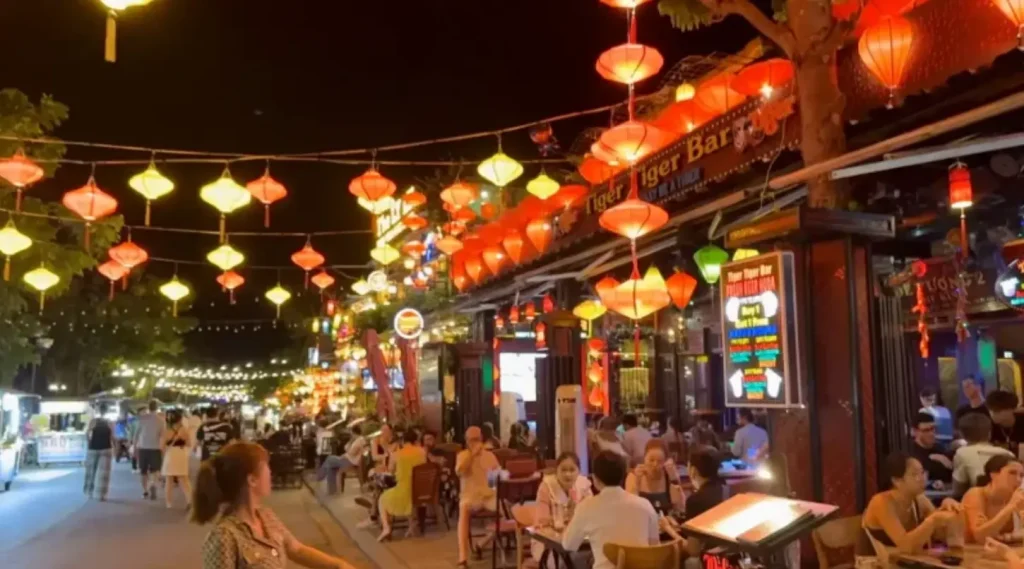
This is the restaurant area of the island. I did not eat dinner here, but it was very lively, with a live band playing to attract customers.
Secrets of the mascot costume
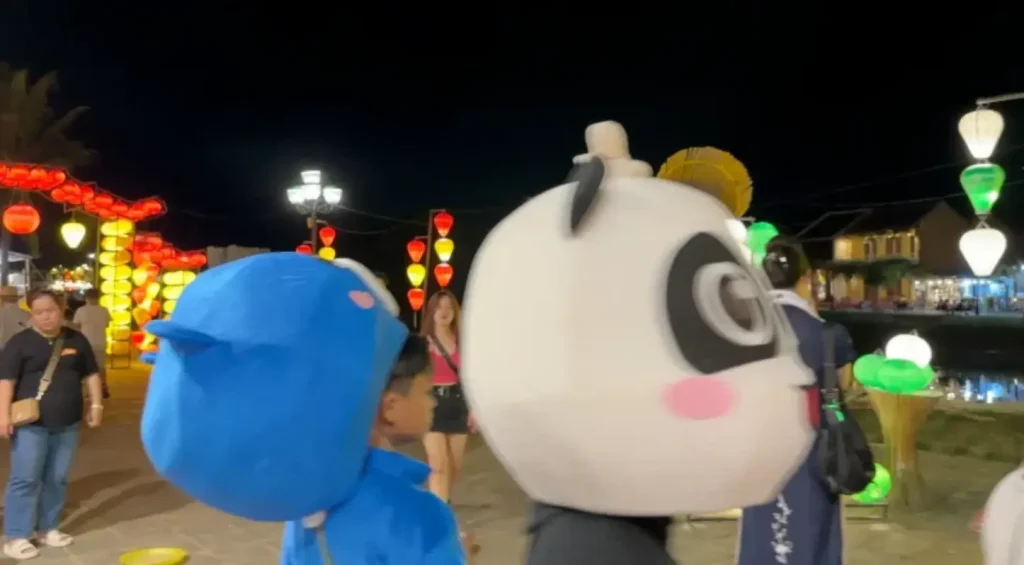
I saw mascot costume all over the island, probably to liven up the city. They were handing out candy to tourists and taking pictures with them, but as far as I could tell, they were not asking for tips.
The person wearing the costume was a child.It was a child in a costume, I was worried that he might suffer from heat stroke because Hoi An in June is hot even at night.
Photo Spot
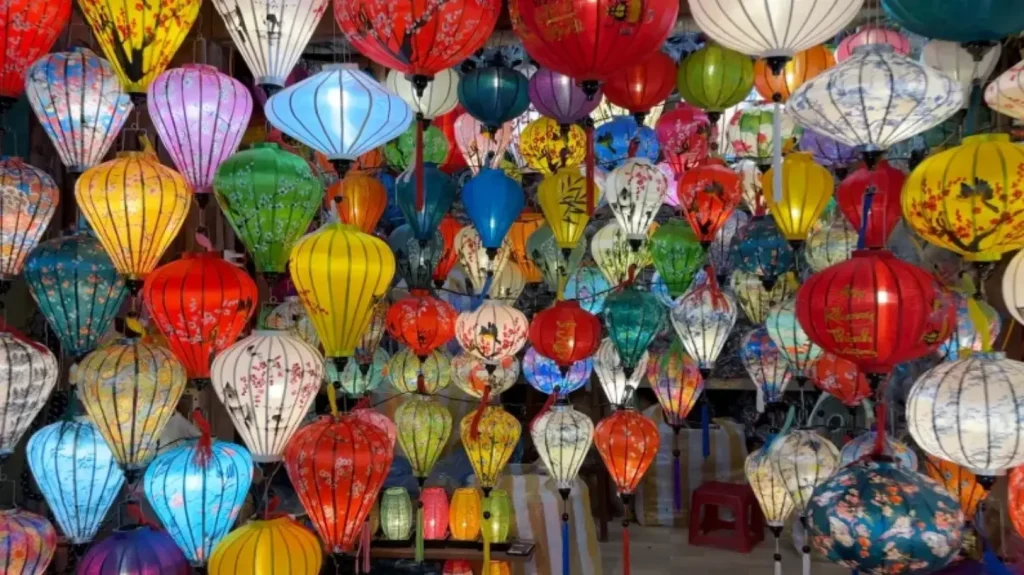
Photo spot on An Hoi Island. There is a fee to take a photo inside this lantern.
I didn’t take a photo, but it probably didn’t seem that expensive. I now regret that I should have taken a photo as a souvenir…
Night market
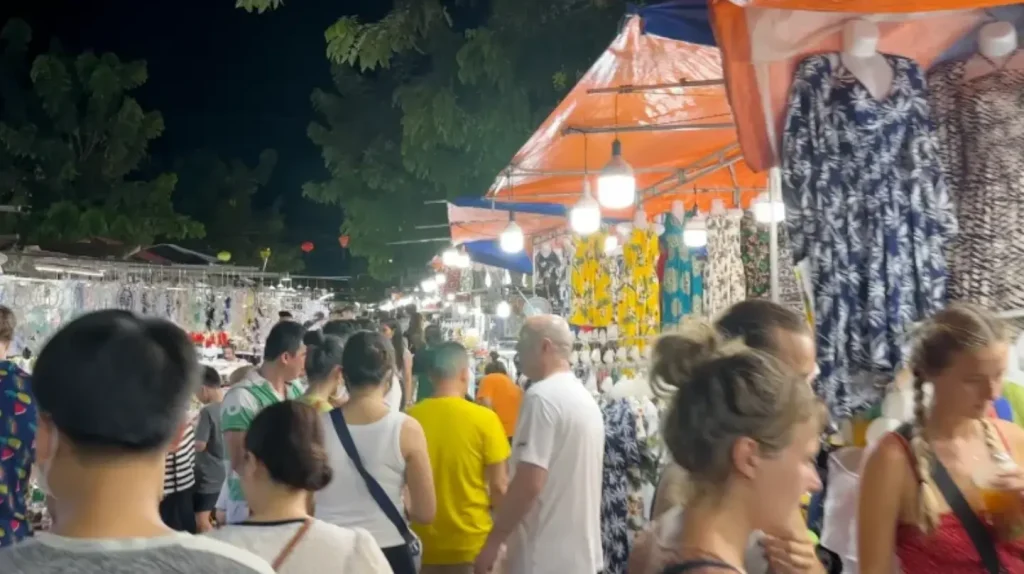
This is the night market on An Hoi Island. I think it’s probably an LED light bulb, but it’s a market that is simply dazzling.
I’ve been to quite a few night markets in Southeast Asia myself, but the amount of light here is by far the best. Be careful not to damage your eyes.
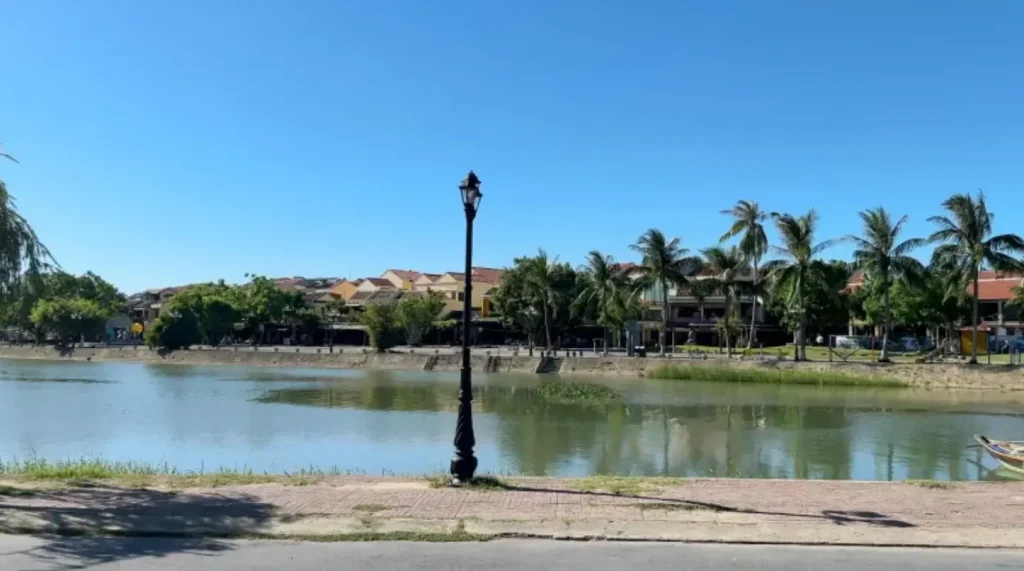
By the way, the opposite shore of the photo is An Hoi Island in the morning. It was quiet, a sharp contrast to the night.
Hoi An Basket Boat

Hoi An’s charm is not limited to the city itself. If you have time to get away from the city for a while, you can enjoy an activity that is completely different from walking around the city: riding a basket boat.
How to get to Basket Boat
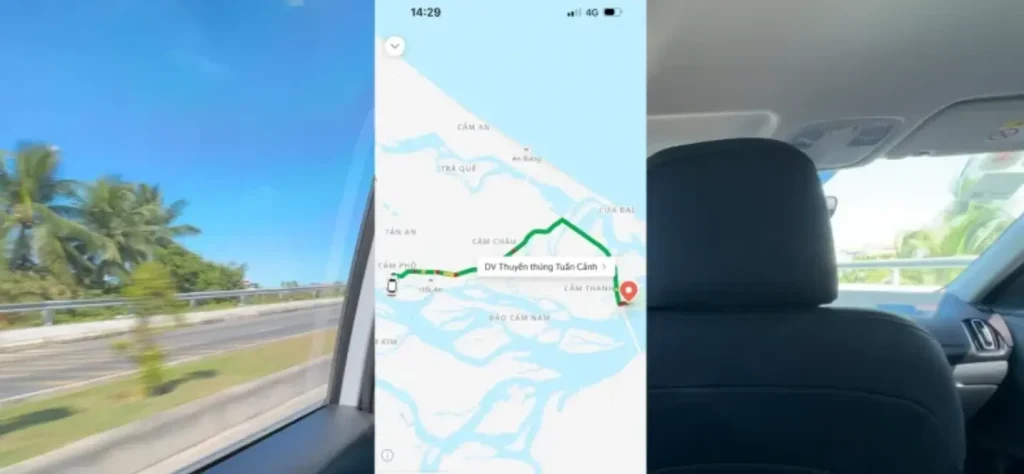
Basket boats can be boarded at the mouth of the Thu Bon River that flows into Hoi An.
I was able to get there by Grab for about 110,000 dong (about 4.23 USD) one way.
Basket boat fee
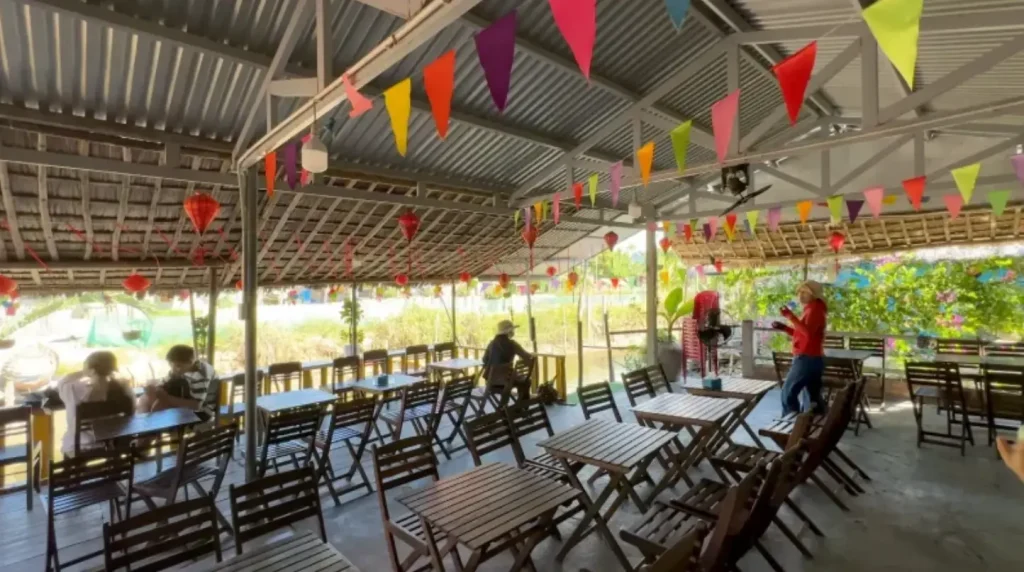
I visited this basketball boat pier.
I booked through Klook. The cost was 4.49 USD for 1 hour.
Impressions of the basket boat

The good news is that it is a completely different experience from walking around Hoi An.
However, if you have an image of a small boat slowly flowing down a tropical river, you may be disappointed with the gap between the reality and the experience.

First of all, there were many customers. And not only that, there was loud music playing, and to be honest, I felt that it was very noisy.


However, I think it is a cosmetic activity considering the price, such as a show that rotates at a very high speed and a demonstration of fishing.

If you have had enough of Hoi An, this is a good place to visit.
Hoi An Sightseeing Model Course
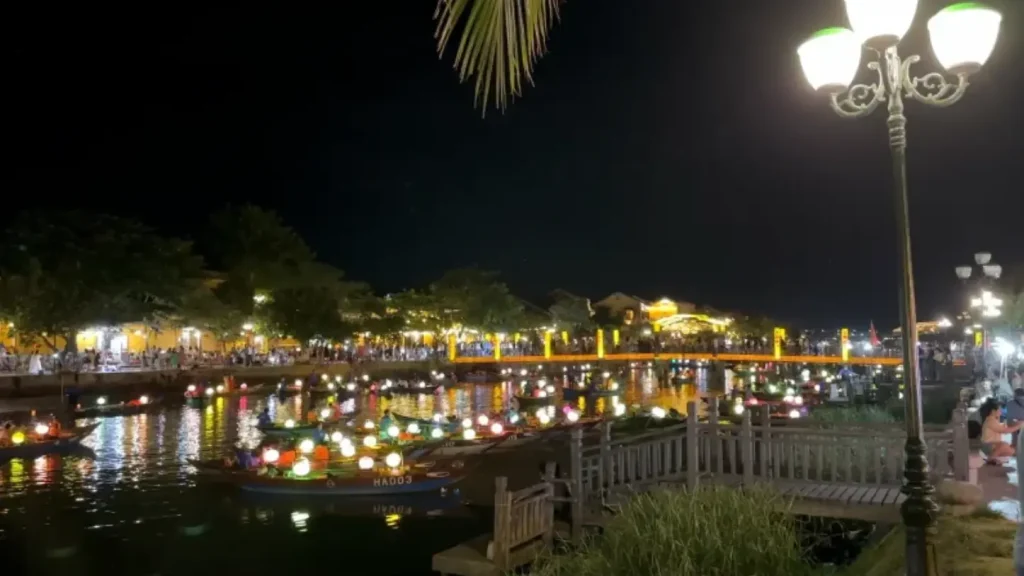
I would like to introduce what kind of model sightseeing courses can be organized based on the sightseeing spots introduced so far. We would be happy if you could use them as a reference.
Sample Day trip plan from Da Nang
- Morning: Transfer from Da Nang to Hoi An
- lunch
- Afternoon: Stroll around the World Heritage Old Town area and cafe
- Evening: Stroll around An Hoi Island as it is lit up
- Return to Da Nang

If you are making a day trip from Da Nang, it is possible to do a bullet tour of Hoi An. However, you will be pressed for time, so the sightseeing will be a bit cramped.
Sample itinerary for 1 Nights and 2 Days in Hoi An
- Day 1: Morning: Transfer to Hoi An
- Afternoon of Day 1: Lunch & cafe tour, walk around the world heritage old town area
- Day 1 evening: Walk around An Hoi Island
- 2nd day morning: Breakfast at the world’s best banh mi restaurant and walk around the old town area, a world heritage site
- Day 2 Afternoon: Return to Da Nang

If you stay one night or two, you will have enough time to explore the city and visit An Hoi Island at night, so your sightseeing in Hoi An will be quite fulfilling. Personally, I think one night or two days is fine.
Sample itinerary for 2 Nights and 3 Days in Hoi An
- Day 1 Morning: Transfer to Hoi An
- Afternoon of Day 1: Lunch & cafe tour, walk around the world heritage old town area
- Day 1 evening: Walk around An Hoi Island
- 2nd day morning: Breakfast at the world’s best banh mi restaurant and walk around the old town area, a world heritage site
- 2nd day afternoon: Stroll around the old town area/basketball boat
- 2nd night: Another walk around An Hoi Island
- Day 3 Morning: Return to Da Nang

Compared to the 2-day/1-night sample travel plan, it includes more time for city sightseeing and An Hoi Island sightseeing, plus an additional basket boat ride. I chose this plan, but to be honest, I had too much time.
Recommended number of days to visit Hoi An
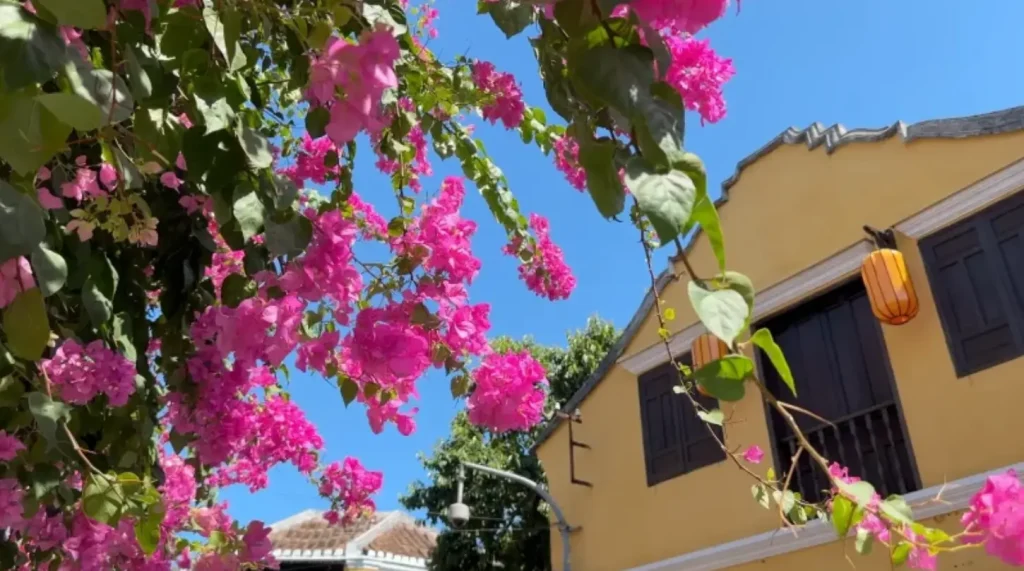
As mentioned above, I think you can fully enjoy Hoi An for one night or two days.
However, in some cases, a two-night stay is recommended.
What I mean by this is that in the rainy season, you won’t be able to go sightseeing smoothly because of the rain, and even in the dry season, you will be sightseeing in a harsh environment of almost 40 degrees depending on the time of year, so you can easily get sick (actually) I also felt like I had heatstroke during the trip.)
Considering this, it is safer to stay two nights than one night during the rainy season or if you are not confident in your physical strength. With that in mind, it would be a good idea to consider the number of days you will spend sightseeing in Hoi An.
Hoi An Tourism Summary
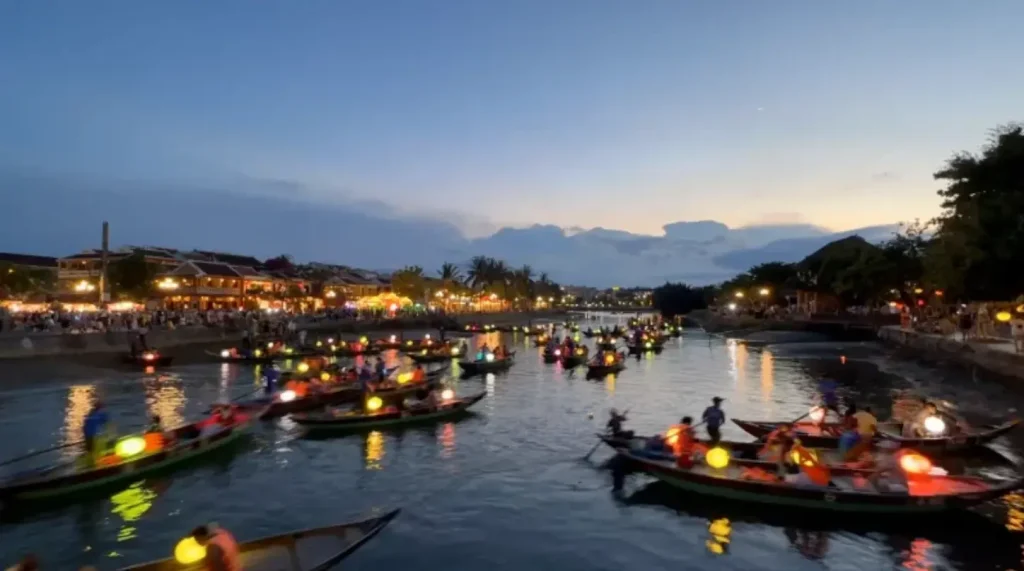
There is no doubt that it is one of the most popular tourist destinations in central Vietnam.
Even from Hanoi or Ho Chi Minh, if you fly to Da Nang, it’s just 30 minutes away with Grab. Therefore, it is actually an easy place to access from anywhere in Vietnam.
So, if you are planning a trip to Vietnam, why not consider Hoi An?
▼Related Articles
